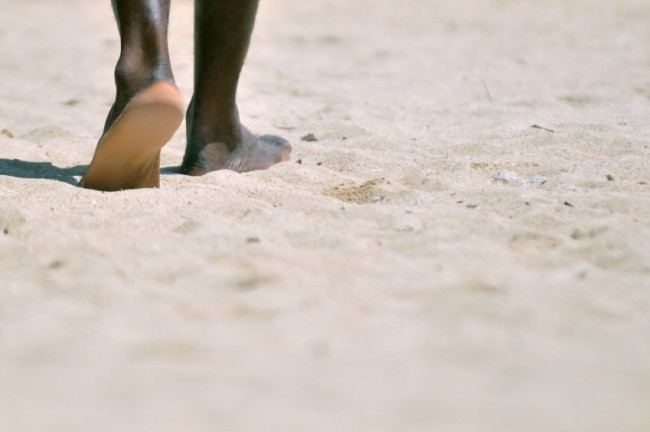
The human foot is comprised of 26 bones, 33 joints and more than a hundred muscles, tendons, and ligaments. It’s a highly complex anatomical structure that helps us walk, run, swim, jump and keep our balance. The foot is one of the least maintained parts of our bodies but one of the most common places we feel pain and there are many things that can go wrong with them.
Did you know that humans were not necessarily meant to wear shoes? Shoes inhibit our natural connection to the ground and compromise their strength and health. Having your feet enclosed in socks and shoes all day acts as an incubator for diseases like athletes foot and fungal nail infections. Shoes also contribute to problems like bunions, hammertoe, ingrown toenails, corns and calluses, and foot odour but when proper care is taken, it’s easy to warn off these ailments.
Athlete’s foot is a highly contagious infection that is caused by fungi. Fungus needs a warm, dark, moist place to grow which makes shoe enveloped feet the perfect place. The symptoms include itching, stinging, cracking and peeling in toe webs, blisters and a red scaly rash. It can be cleared up using antifungal creams but should be prevented in the first place. Drying feet crevasses thoroughly, giving the feet as much air as possible and wearing thongs in public showers will mostly prevent the infection from occurring.
Bunions are a painful foot deformity characterised by a mechanical instability in the big toe joint which causes the enlargement of the joint and results in the big toe to pointing inwards. Factors that exacerbate and cause bunions are wearing shoes that don’t fit properly, arthritis, age, trauma to the foot and nerve conditions. Treatments include reducing pressure on the bunion, custom made arch supports and anti-inflammatory medication. In more extreme cases surgery may be required to alleviate the deformity and realign the joint.
Hammertoe is a deformity in the toe (usually the second toe) that is caused by wearing ill-fitting shoes. This results in muscles and tendons shortening and tightening, making the toe bend in a claw like position. Treatments for hammertoe include wearing comfortable, well-fitting shoes, a device called a “hammertoe regulator” that straighten the toe, and toe exercises. In severe cases, surgery may be required to straighten the toe.
Corns and calluses are the result of thickening of the skin due to constant pressure. When constant pressure or friction is endured on a body part, the skin grows more rapidly to protect itself and sometimes the pressure is so great that it thickens to a foreign and painful point. Consulting a podiatrist is recommended when treating corns and calluses. They can be treated by wearing softer and more comfortable shoes, chemical treatment, trimming using a scalpel blade, and in more extreme cases, surgery.
Foot odour is a common problem caused by sweating and bacteria growth on the feet. The condition is worsened by wearing socks and or shoes for long periods of time. Mild soaps, avoiding synthetic socks, changing socks and shoes regularly, and applying methylated spirits can reduce foot odour. In extra smelly cases antibiotics may be prescribed to help kill off the bacteria.
Around 40 percent of Australians will inevitably experience foot problems in their lifetime whether it be as simple as a callus or severe as bunions. The previous ailments are some of the most common foot related illnesses and are by and large preventable with proper foot care – so do just that and look after your feet.



Comments are closed.